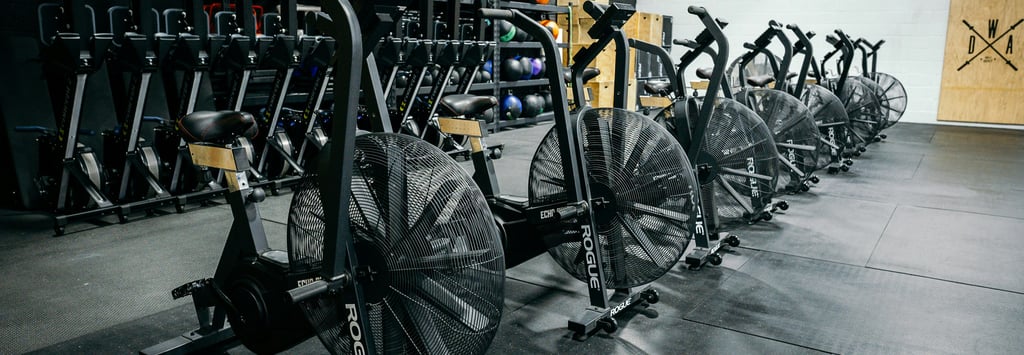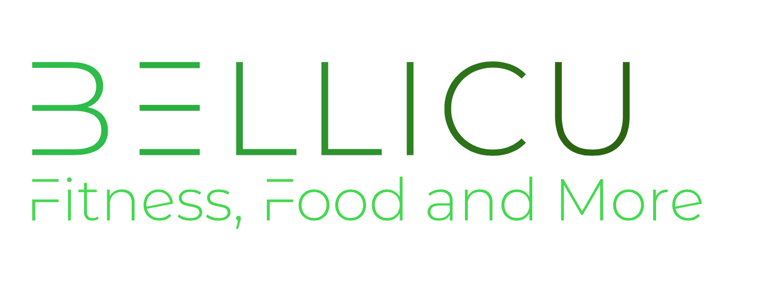When it comes to fat loss, most people focus on calories and macros—but what often gets overlooked is how you train, recover, and manage your body over time. Cutting fat while preserving muscle isn't just about eating less—it's about sending your body the right signals to hold onto lean tissue.
If you’ve already dialed in your nutrition, your next step is to optimize everything else: cardio, strength training adjustments, recovery protocols, and long-term strategies like diet breaks. Done wrong, these can erode muscle mass. Done right, they’ll help you emerge from your cut leaner, stronger, and metabolically resilient.
In this guide, we’ll explore the critical components that protect your muscle while maximizing fat loss—so you can maintain performance, look more defined, and feel great throughout your cut.


How to Cut Fat Without Losing Muscle (II)
Cardio, Recovery & Long-Term Strategy
Cardio During a Cut: Finding the Right Balance
Cardio is a valuable tool during fat loss, but it must be used strategically to support—rather than compromise—muscle retention. The goal is to enhance calorie burn, improve cardiovascular health, and assist with fat mobilization, all without interfering with your ability to train hard or recover well. Not all cardio is created equal, and how you implement it can make a big difference in your results.
The two most common types of cardio used during a cut are:
LISS (Low-Intensity Steady State): This includes activities like brisk walking, light cycling, or incline treadmill work performed at a steady, moderate pace for 30–60 minutes. LISS is easier to recover from and can help increase your daily energy expenditure with minimal fatigue. It also pairs well with rest or active recovery days, making it ideal for maintaining consistency without overstressing the body.
HIIT (High-Intensity Interval Training): HIIT alternates short bursts of intense effort (like sprinting, rowing, or cycling) with periods of rest or low-intensity movement. HIIT burns a lot of calories in less time and can boost metabolic rate post-exercise. It may also help preserve lean mass by stimulating fast-twitch muscle fibers (Frontiers in Physiology, 2017). However, it places a higher recovery demand on the nervous system and muscles, so it should be used sparingly—especially during low-calorie phases.
LISS is particularly useful for reducing overall stress load while still increasing daily movement, making it a great option during intense training blocks. It also encourages blood flow and may support recovery by enhancing nutrient delivery to sore muscles. HIIT, on the other hand, is best used 1–2 times per week when time is limited or when you want to include a metabolic conditioning stimulus.
For most people, 2–3 cardio sessions per week (lasting 20–40 minutes each) are sufficient to support fat loss without impairing muscle recovery or strength. As you get leaner or aim to increase your calorie burn, this can be bumped to 3–4 sessions, especially if your recovery and sleep remain intact. Be mindful of energy levels, mood, and training performance—if these start to decline, it may be a sign that you’re doing too much.
Additionally, consider your preferences and schedule. The best form of cardio is the one you can consistently perform without burning out. Whether it’s a morning walk, a cycling class, or short HIIT intervals post-lift, the goal is to choose a form of cardio that integrates seamlessly into your routine and supports—not sabotages—your lifting progress. Always remember: cardio should enhance your fat loss—not come at the cost of your muscle.
How Much Cardio Is Too Much?
Doing too much cardio can backfire. While it increases calorie expenditure, excessive cardio—especially endurance-style or high-frequency sessions—can lead to:
Increased cortisol (a catabolic hormone linked to muscle breakdown)
Impaired recovery from resistance training
Decreased strength and muscle retention
Overreliance on cardio for fat loss often creates a large energy deficit that forces your body to catabolize muscle for fuel. If your lifts are stalling, you’re constantly sore, or you feel drained between workouts, it’s time to pull back.
Aim to structure cardio so that it fits into your week without disrupting resistance training. For example, you could:
Do 30 minutes of LISS after upper body training
Add HIIT (e.g., 8x30-second bike sprints) after a lower-body day
Schedule longer LISS walks on rest days for recovery and stress relief
The key is to use cardio to support a mild to moderate calorie deficit—not to punish yourself into fat loss.
Cardio Timing: Before or After Weights?
If you’re combining cardio and weight training in the same session, always lift before cardio. Research shows that doing cardio first—especially high-intensity forms—can reduce strength performance and blunt the anabolic response to resistance training by pre-fatiguing the muscles and depleting glycogen stores (Healthline, 2023). This can diminish the quality of your lifts and compromise the primary goal of maintaining lean muscle.
When cardio is performed after weights, the body has already received the mechanical tension it needs to signal muscle retention. Additionally, post-workout cardio can increase fat oxidation since glycogen stores are already partially depleted from resistance training. This makes it a more efficient time to promote fat burning without impacting the training stimulus for muscle.
The most effective cardio timing strategies include:
Lifting and cardio on separate days: This is the gold standard for recovery and performance. By giving each session its own space, you can push harder in both without overlap in fatigue.
Weights in the morning, cardio in the evening: This split-session method is ideal for those with flexible schedules. It allows your body to refuel between efforts and reduces interference between adaptations.
Short post-workout cardio: A brief 15–30-minute session of LISS (like incline walking or steady cycling) after weight training can be effective for increasing calorie burn without overloading your recovery system.
You can also match the type of cardio to your lifting day for synergy—for instance, keeping HIIT away from leg days to prevent compounding fatigue. Conversely, light cardio post-upper body sessions may be easier to recover from. If time constraints mean you must do both back-to-back, always lead with strength training.
Ultimately, the best timing depends on your individual recovery capacity, goals, and lifestyle. A well-structured program that places resistance training as the anchor—and layers in cardio appropriately—will produce far better results than one where cardio dominates and lifting becomes an afterthought.
Strength Training Adjustments While Cutting
Resistance training is your primary defense against muscle loss. But while cutting, your training program may need slight adjustments to avoid overreaching:
Keep intensity high: Aim to lift in the 5–8 rep range for key compound lifts. Maintaining heavy loads signals to your body that muscle is still essential.
Moderate volume: If you were doing 20–25 sets per muscle per week while bulking, you might drop to 12–16 high-quality sets while cutting.
Strategic failure: You don’t need to push every set to failure. Leave 1–2 reps in reserve on most sets to reduce recovery demands.
Use isolation wisely: Keep your accessory work focused and targeted—don’t waste energy on excessive volume for small muscle groups.
Most importantly, track your performance. If your strength is holding steady or slightly improving, you’re likely preserving muscle. If strength is falling rapidly, reassess your recovery and calorie intake.
Sleep: The Silent Muscle Preserver
Sleep is one of the most powerful tools for fat loss and muscle retention. During deep sleep, your body secretes growth hormone, repairs muscle tissue, and balances hunger hormones like ghrelin and leptin.
Research (Nedeltcheva et al., 2010) found that even when calories are controlled, sleep-deprived dieters lost significantly more lean mass than those getting adequate sleep. This means sleep affects where your weight loss comes from.
Tips to optimize sleep during a cut:
Stick to a consistent bedtime and wake time—even on weekends
Sleep in a cool, dark room free from electronics
Limit caffeine after mid-afternoon
Use wind-down routines like reading or journaling to ease stress
A well-rested body is far more likely to hold onto muscle and lose fat efficiently.
Managing Stress and Cortisol While Cutting
Cutting adds stress—your body is working hard to function with less energy. Combine that with work, life, and poor sleep, and cortisol levels can soar.
Chronically elevated cortisol is linked to:
Muscle protein breakdown
Increased belly fat storage
Disrupted sleep and appetite regulation
To manage stress during a cut:
Incorporate daily low-intensity movement (like walks or stretching)
Use meditation apps or breathwork techniques (5–10 minutes/day)
Limit screen time in the evening
Set boundaries around work and personal time
Reducing total stress load helps maintain a hormonal environment favorable to muscle preservation and fat loss.
Diet Breaks and Refeeds: A Strategic Reset
Prolonged dieting can lead to metabolic adaptation—a process where your body burns fewer calories at rest and resists further fat loss. To combat this, insert diet breaks and refeeds:
Diet Breaks (1–2 weeks at maintenance calories): Improve hormonal markers like leptin, increase energy, and improve mood and adherence (Trexler et al., 2014).
Refeed Days (1–2 days, high-carb): Temporarily increase leptin, restore glycogen, and support training performance (Campbell et al., 2020).
These tools are especially useful if:
You’re dieting for longer than 8–10 weeks
You’ve hit a plateau
You’re experiencing signs of overtraining
Sample strategy: Diet for 6 weeks, insert a 1-week break at maintenance, then resume cutting. Or include weekly refeed days (e.g., Sunday with higher carbs and calories).
Diet breaks are not setbacks—they’re investments in long-term progress and lean mass preservation.
How Long Should a Cut Last?
The ideal cutting phase varies based on body composition and goals, but here’s a general guide:
Short cuts (4–6 weeks): Ideal for lean individuals trying to drop a few pounds
Moderate cuts (8–12 weeks): Suitable for most people looking to lose 5–10% body weight
Longer cuts (16–20+ weeks): Best split into multiple phases with planned breaks
You should stop cutting and reassess when:
You’ve reached your goal body fat or performance target
Progress stalls despite adherence
You notice strength loss, mental burnout, or health markers worsening
From here, transition into maintenance (to solidify results) or a lean bulking phase if you want to regain muscle.
Final Thoughts: Fat Loss Without Muscle Loss
Cutting fat while preserving muscle is about more than just hitting a calorie deficit. It’s about working with your body—not against it.
To succeed, you need a multifaceted approach:
Resistance training remains your foundation
Cardio is supportive—not central
Recovery and sleep are non-negotiable
Diet breaks and refeeds are tools for long-term success
Stress management is a performance enhancer, not just a mental health tool
Stay patient, listen to your body, and trust the process. You’ll not only lose fat—you’ll reveal a stronger, leaner, and more resilient version of yourself.
References
Trexler, E. T., Smith-Ryan, A. E., & Norton, L. E. (2014). Metabolic adaptation to weight loss: implications for the athlete. J Int Soc Sports Nutr, 11(1), 7.
Campbell, B. I., et al. (2020). Intermittent dieting and metabolic rate in resistance-trained females. Appl Physiol Nutr Metab, 45(4), 384–390.
Nedeltcheva, A. V., et al. (2010). Sleep curtailment is accompanied by increased loss of lean body mass during caloric restriction. Am J Clin Nutr, 91(2), 537–543.
Frontiers in Physiology. (2017). High-Intensity Interval Training in Health and Disease: Cardiovascular, Metabolic, and Molecular Adaptations.
Helms, E. R., Aragon, A. A., & Fitschen, P. J. (2014). Evidence-based recommendations for natural bodybuilding contest preparation. J Int Soc Sports Nutr, 11(1), 20.
Healthline. (2023). Does cardio before or after weights matter? Retrieved from healthline.com.
Fat Loss Solutions
Discover effective strategies to lose fat while preserving muscle through smart training and nutrition.




Smart Training Tips
Learn how to optimize your workouts for fat loss without compromising your strength or muscle mass.
Recovery Strategies
Implement recovery techniques that enhance performance and support your body during the fat-loss journey.
Real Results
Transform your body without losing muscle. Discover effective strategies today.
I lost fat without sacrificing muscle. The guidance was invaluable and effective!
Alex Johnson
New York
This guide helped me balance my diet and training perfectly. I feel stronger and leaner than ever before. Highly recommend for anyone serious about cutting!
Jamie Lee
Los Angeles
